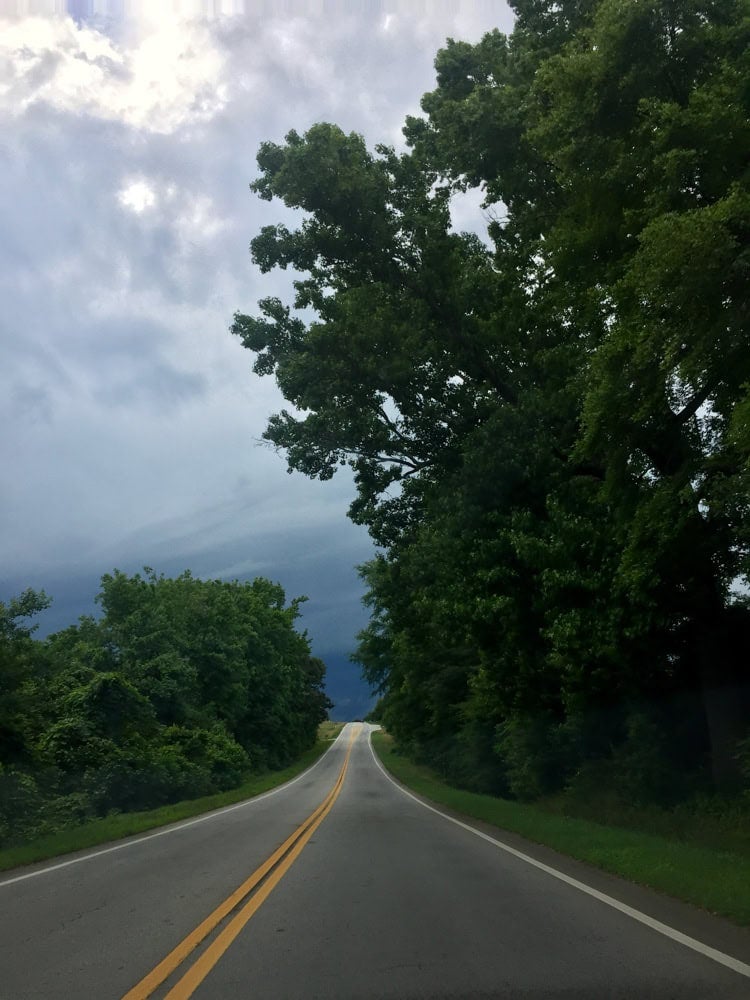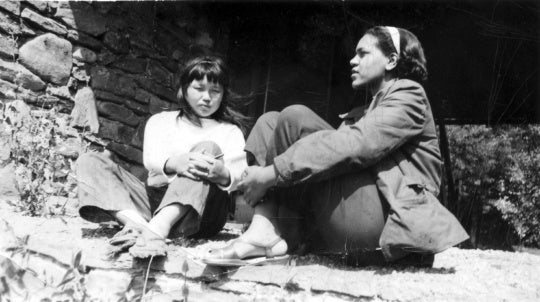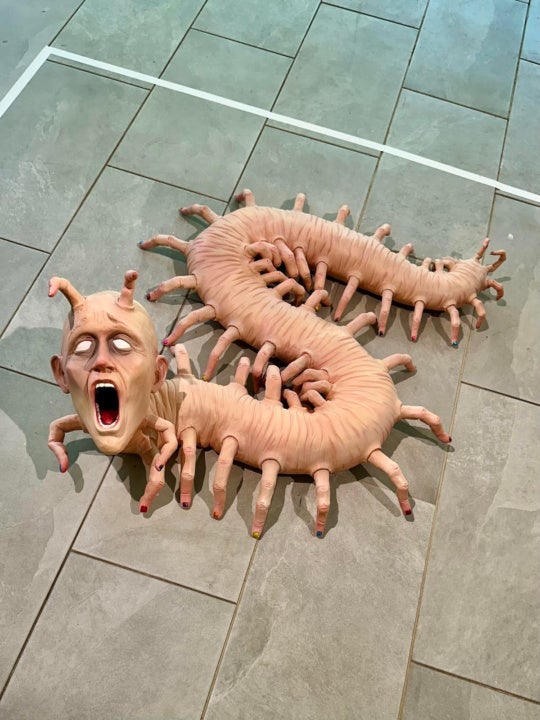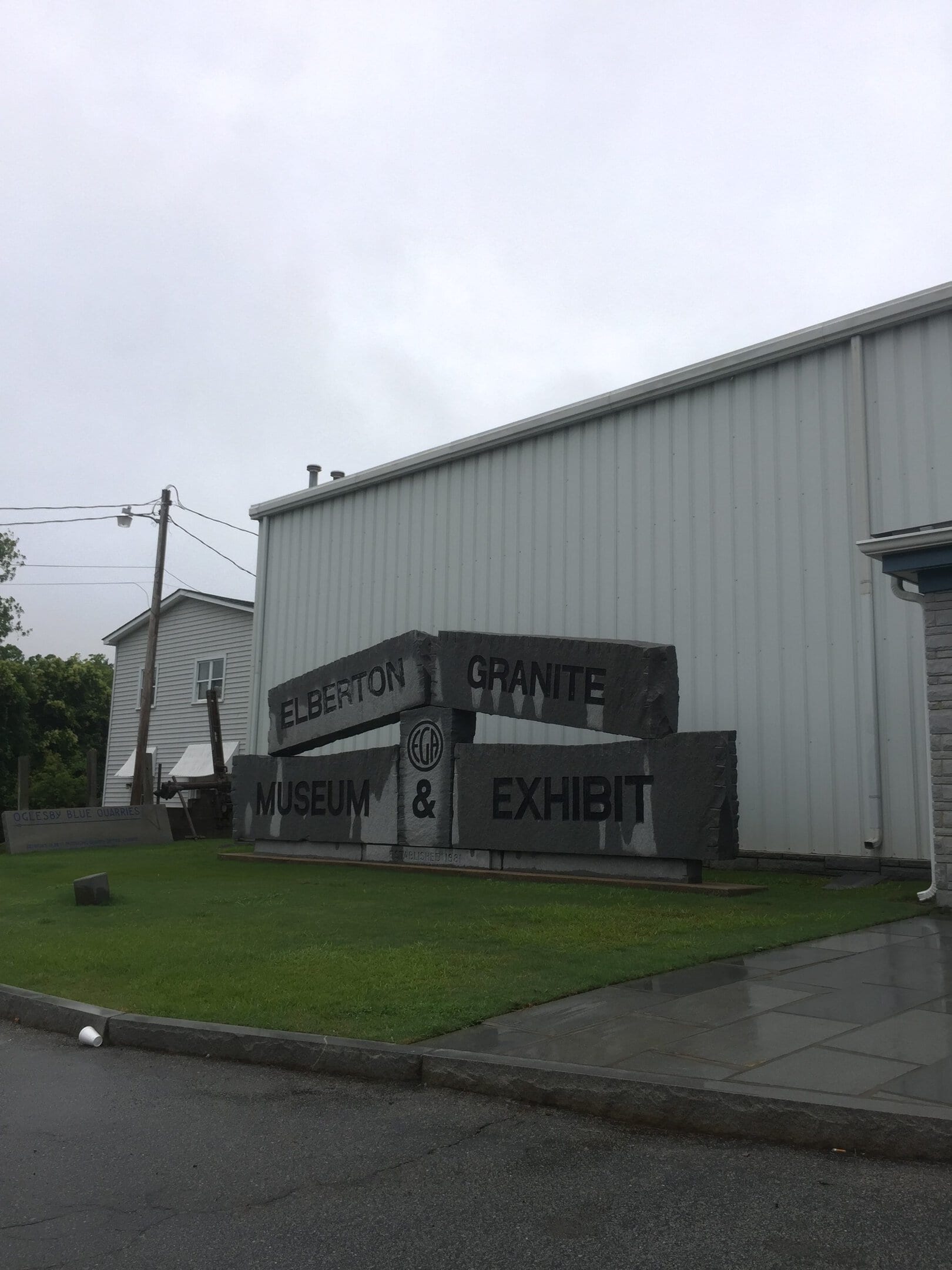
Once the zenith of a 22-foot pedestal in Elberton’s city center, a broken Confederate monument now occupies a side room in the Elberton Granite Museum and Exhibit, an aluminium-sided building that looks like a warehouse save for its a hefty stone signage. The sculpture’s story is both eccentric and unsettling. It bears relevance in contemporary culture, given the ongoing problem of Confederate monuments in the South and the call to dismantle them.
Like many Confederate memorials, Elberton’s was created decades after the Civil War ended. Sculptor Arthur Beter created the 7-foot-tall Confederate soldier in the 1890s, and the citizens of Elberton erected it on July 15, 1898. Soon after, the same people dubbed the statue “Dutchy,” a reference to his resemblance of Pennsylvanian immigrants of Swiss and German origins, “Dutch” a variation of “Deutsch.” This comes, in part, from his bulbous headgear and heavy coat. A reporter for the Atlanta Constitution decried them as a “foreign helmet and decidedly northern dress” in a 1945 article. According to local lore, Beter, the sculptor, was an immigrant to the United States who purportedly did not understand the difference between Union and Confederate uniforms. Little is known about Beter; it’s speculated he was born in Germany and had been living in North prior to Elberton. The sculptor’s glossing over of the variations in the warring armies costumes was sadly apt, an unwitting statement on the great tragedy of the Civil War.
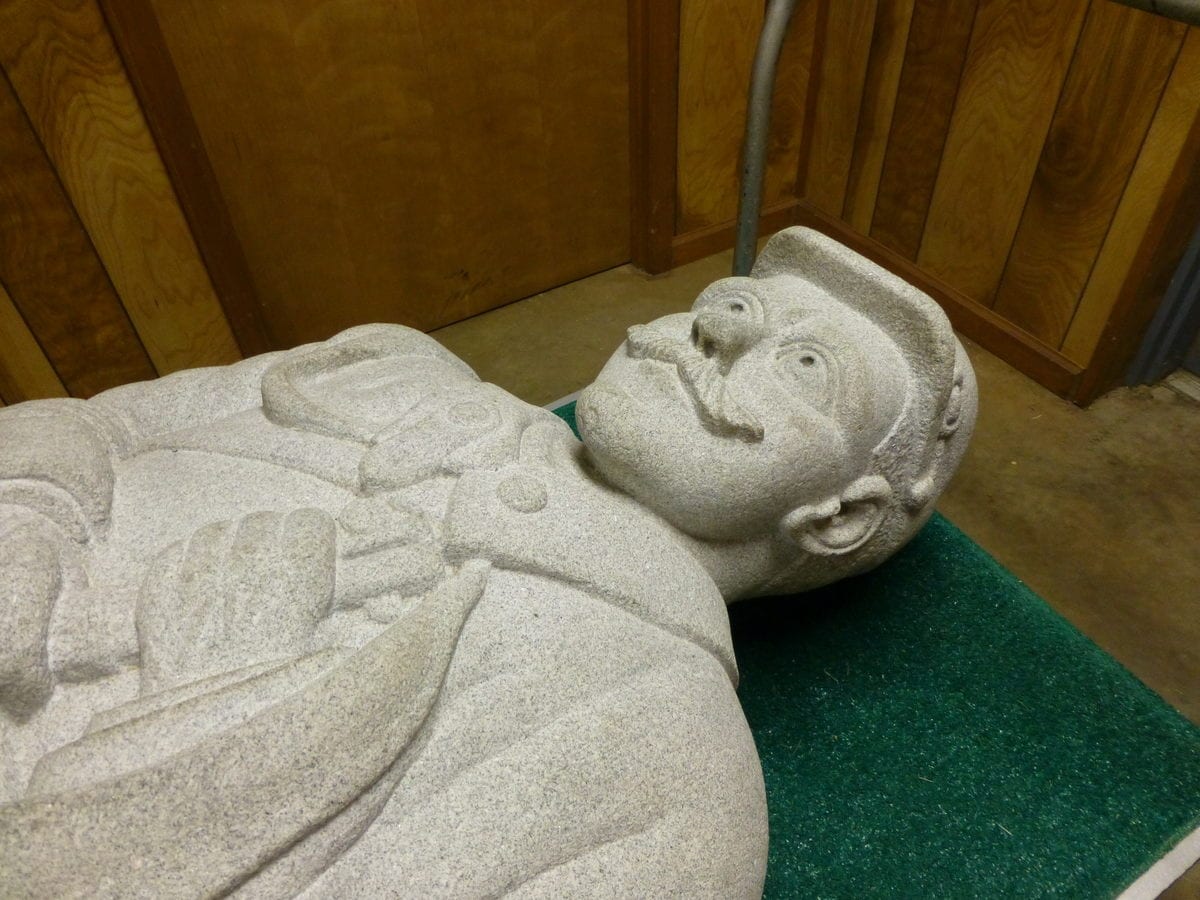
Compared to the more naturalistic soldier that replaced him and to this day marks the center of the city’s downtown square, Dutchy is stylistically crude, with a blocky body and generic face with wide-open almond-shaped eyes. He sports a droopy mustache that creates the appearance of a half smile. Maybe it was the after-effect of visiting the Guidestones, but his stylized features and stiff posture evoked ancient Egyptian statues. The exaggerated eyes brought to mind the ever-alert eyes of supplicant Sumerian statuettes of the third millennium BCE or the fragmented head of from the Colossus of Constantine. The guileless smirk recalls the cookie-cutter expressions of ancient Greek kouri that were meant to suggest vitality but to our modern sensibility convey more of a disconcerting verve. Yet, it’s unlikely that these auspicious associations were intended by Beter. Instead, Dutchy looks vapidly forward as if in a stupor.
Today, Dutchy is broken into three pieces. Laid on his back on a cart covered with green synthetic turf, the broken form suggests a corpse on unceremonious—even clinical—display. His large eyes permanently stare upward at the ceiling. Severed from his body, Dutchy’s legs lay on the floor in front of the cart along with the plinth to which his feet were once connected. On the wall are a few yellowing, laminated newspaper articles and a gray box. Push a button and a peppy voice narrates the sculpture’s fate.
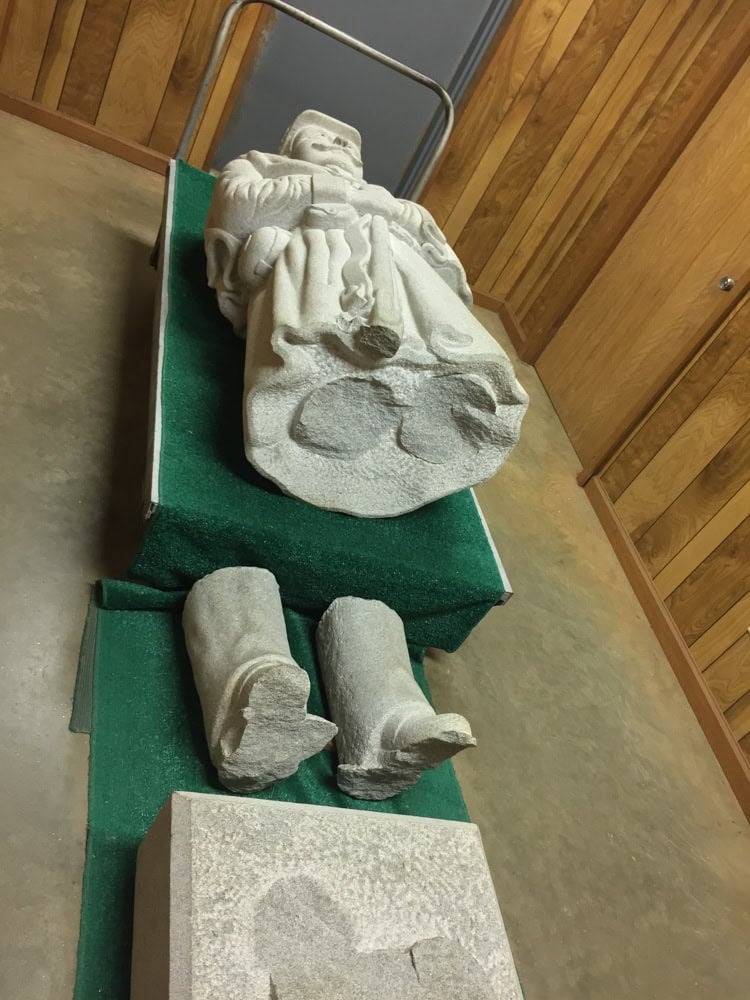
So, who destroyed Dutchy?
Given the current discord, you might guess angry reformers intent on shedding the inglorious legacy of the Confederacy. But no, it was a group of Elberton citizens who were ex-Confederates, a few former soldiers, themselves. Angered by Dutchy’s sartorial semblance to a Union soldier, the men tore down the monument in the dark morning hours of August 14, 1900. Sometimes, the act is appallingly described as a “lynching.” The sculpture remained on view briefly after the dismantling and was then buried face down as a sign of contempt—the choice to inter the soldier instead of destroy him most likely due to Dutchy’s weight of almost 3,000 pounds. You might say such a story gives precedent for the removal of Confederate monuments, but it’s complicated.
One on hand, there are shades of Southern Gothic humor in Dutchy’s fate—a small town erects a Confederate monument and then tears it down because it looks bad. On the other, the story is dark and revealing. The brutal nighttime removal of the sculpture and subsequent public spectacle points to a narrow-minded culture of vigilante white supremacism. Dutchy’s nocturnal fate eerily echoes the violent deaths enacted by a white populace on so many people of color. And subsequent to Dutchy’s removal, a replacement soldier with a stern face and clearly Confederate uniform was installed. But it was a cast tin statue, not Elberton granite.
Dutchy’s story doesn’t end in 1900. Two years after the Guidestones were erected, in April 1982, the sculpture was dug up. About 200 people, some descendants of the turn-of-the century iconoclasts, gathered to watch the event. It which culminated in a trip to a local car wash where the sculpture was cleaned and found to be in good condition. (Footage of Dutchy’s unearthing and subsequent ablutions can be seen in a clip from the Travel Channel’s Mysteries at the Museum series.) As the The Elberton Star reported, Joe Fendley, president of the Elberton Granite Association (EGA) and crucial player in the Guidestones construction remarked: “Living proof granite is everlasting.” Dutchy was taken to the Elberton Granite Museum and Exhibit, established about two years prior, where he remains.
Why exhume him so long after his violent removal? The EGA recognized that Dutchy holds a significant place in Elberton’s history. Indeed, Christopher Kubas, Executive Vice President of the Elberton Granite Association, remembers that Dutchy had evolved into an urban legend over the years, and one of the founding goals of the Elberton Granite Museum was to find him.
After the Civil War, Elberton survived as a cotton producer, but the discovery of granite and the establishment of the first quarry in 1882 transformed the small town. The granite for Dutchy came from Nathanael Long, a doctor and businessman who supplied granite to the railroad industry, who donated it at the request of the Women’s Confederate Memorial Society. Thus Dutchy marked a transition: he was the first sculpture made in Elberton, heralding a successful industry that persists to this day and is vital to the city’s economy. The Italian sculptor responsible for Dutchy sold his granite finishing shed to another Italian immigrant and sculptor, Peter Bertoni, who founded Elberton’s first commercial monument plant. Kubas speculates that Elberton produces about two-thirds of the world’s granite memorials and that the EGA currently has about 70 members. Together, EGA companies generates somewhere around $65 million in payroll alone each year.
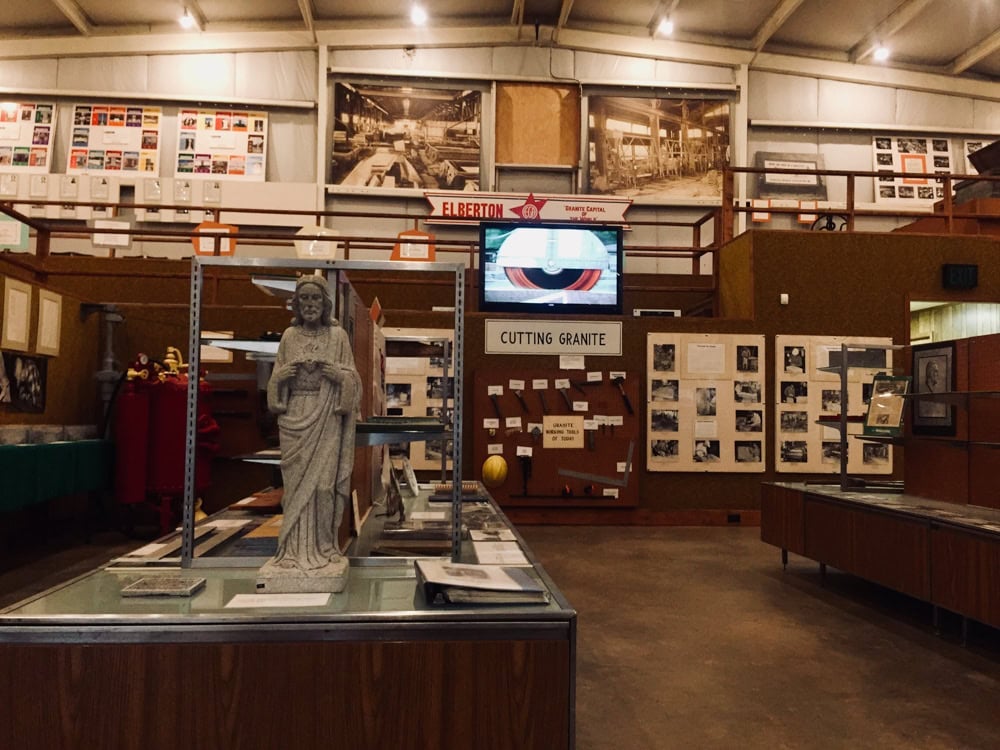
Confederate monuments are under increased scrutiny as they signify racist ideology under the guise of war memorial. Thus Dutchy’s fate seems oddly appropriate. Supine and broken in a museum’s side room, he becomes part local oddity and part didactic tool that could, with the appropriate research and presentation, educate viewers about Elberton’s history and the South’s past. What’s needed is stronger contextual text that does not skirt the obvious problems and racism of Confederate monuments.
On the way home, I pulled over under a gas station awning during a particularly bad downpour. There, I thought of Dutchy and the Guidestones as bookends, their stories tangled. Marking the beginning of a granite carving industry that reaches its strange apex with the Guidestones, Dutchy persists as a toppled reminder of a violent and dark past. Made to be a beacon for posterity, the Guidestones loom over a pasture waiting for an imaginary post-apocalyptic future. In between them are the quiet streets I now occupied—small Southern towns negotiating the present. The rain and clouds cleared, and I drove away down shiny roads, clean and empty in the waning but newly brilliant sunlight.
Read about Rebecca’s trip to the Georgia Guidestones, which led her to Dutchy.
